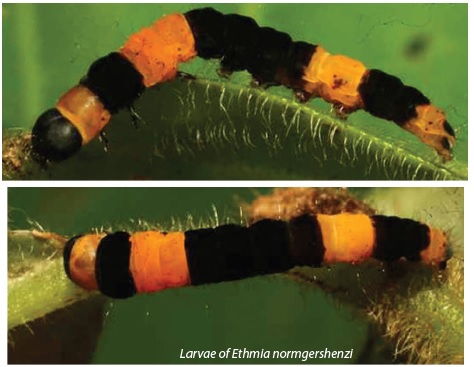
It's especially an honor when a duo--a husband-and-wife nature conservation team--is singled out for that recognition.
Leslie Saul-Gershenz (she holds a doctorate in entomology from UC Davis) and husband, Norm Gershenz, co-founders of the Bay Area-based SaveNature.Org, have namesakes:
Ethmia lesliesaulae and Ethmia normgershenzi are newly discovered species of moths in the rain forests of Costa Rica.
The moths belong to the family Depressariidae and now they're part of the Gershenz family, too!
Both new species and 20 others in the genus are described in the Zookeys paper, A Synopsis of the Genus Ethmia Hübner in Costa Rica: Biology, Distribution, and Description of 22 New Species (Lepidoptera, Gelechioidea, Depressariidae, Ethmiinae), with Eephasis on the 42 Species known from Área de Conservación Guanacaste by E. Phillips-Rodríguez, J.A. Powell, W. Hallwachs and D. H. Janzen. The larvae feed on plants in the genus Drymonia (Gesneriaceae).
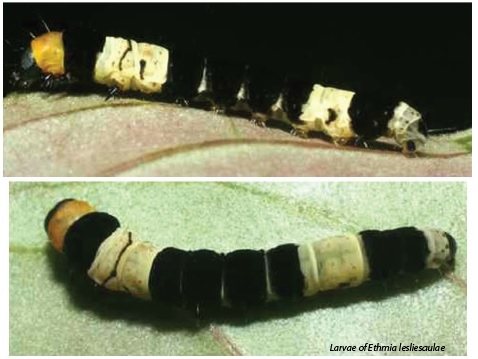
- Ethmia lesliesaulae has been recorded from both sides of the Cordillera Volcánica de Guanacaste at altitudes ranging from 300 to 645 meters.
- Ethmia normgershenzi has been recorded from the east side of the Cordillera Volcánica de Guanacaste from 400 to 660 meters.
Norm and Leslie co-founded SaveNature.Org, an international conservation program, a 501(c)( 3), to "protect terrestrial and aquatic ecosystems worldwide and to inspire stewardship in the public through hands-on education programs." Norm serves as the chief executive officer and director of the Insect Discovery Lab (IDL). SaveNature.Org conducts nearly 800 hands-on conservation education programs in schools throughout the Greater Bay Area, and reaches more than 38,500 children annually with its IDL.
They make the news. Their work has been highlighted in National Geographic, Time magazine, and ABC's World News Tonight. Robert Pringle's recent article, Upgrading Protected Areas to Conserve Wild Biodiversity, in the journal Nature, details the organization's collaborative work to increase the size of protected areas.
The organization has added 74,000 acres of wildlife habitat to large-scale National Parks around the world and protected marine habitat and watersheds in the Latin America, Asia and the Caribbean. To date, SaveNature.Org has raised more than $4.7 million to help preserve thousands of acres of rain forest, coral reef and desert habitat around the world. Their catchy theme: "Saving Nature Is Habitat Forming."
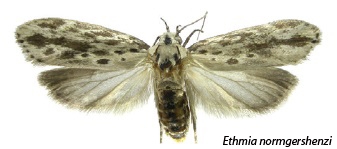
Norm was affiliated with the San Francisco Zoo for more than 18 years as an educator, member of the animal care staff, fundraiser, and researcher. Norm has quite the biography: he has tracked black rhinos in Zimbabwe, chased orangutans in Borneo, and stalked the elusive platypus in Australia. He has handled boas and bobcats, pandas and elephants, snow leopards and koalas, hippos and hornbills. He has worked as a field biologist and naturalist in Borneo, Malaysia, India, Nepal, Costa Rica and Namibia.
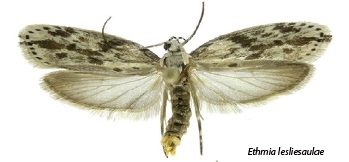
Basically, the larvae of the parasitic blister beetle produce a chemical signal or allomone, similar to that of a female bee's pheromone to lure males to the larval aggregation. The larvae attach to the male bee on contact and then transfer to the female during mating. The end result: the larvae wind up in the nest of a female bee, where they eat the nest provisions and likely the host egg.
"Our research has added to the understanding of the communication signals of bees in the genus Habropoda," she related. "We now know that they use long-chain hydrocarbons for the female sex attractant and vary the position of the double bounds in different components and vary proportions of these components to avoid cross attraction among closely related species. Parasites co-opt this communication channel to deceive male bees in the Meloe-Habropoda system."
Leslie is also a 2004 graduate of The Bee Course, an intensive 10-day workshop sponsored by the American Museum of Natural History at the Southwestern Research Station, Portal, Ariz. One of The Bee Course instructors is Robbin Thorp, distinguished emeritus professor of entomology at UC Davis.
Leslie's presented her research at the Entomological Society of America meeting in November in Denver, Colo. Her next research presentation will be the California Native Plant Society Conservation conference, scheduled Feb. 1-3, 2018 in Los Angeles.
Overall, moths boast incredible diversity, according to Jerry Powell, emeritus professor at UC Berkeley and co-author Paul Opier, in their masterwork, "Moths of Western North America" (University of California Press). They describe and illustrate some 2500 species in their book. The region is comprised of some 8,000 named species of moths. Most attract attention only when their larvae create economic damage, such as eating holes in woolens, infesting stored foods, boring into apples, damaging crops and garden plants, or defoliating forests.
Meanwhile, Ethmia lesliesaulae and Ethmia normgershenzi are right at home in the rain forests of Costa Rica, and their namesakes are right at home in their Bay Area-based conservation group.
And meanwhile, if you want an insect named for you or a loved one, here's one way: Contact the Bohart Museum of Entomology's biolegacy program. Insects that need naming include a stiletto fly from Australia and Thailand, said director Lynn Kimsey, professor of entomology at UC Davis.
(Editor's Note: Insect images from Wikipedia, courtesy of E. Phillips-Rodríguez, J. A. Powell, W. Hallwachs and D. H. Janzen)
Attached Images:
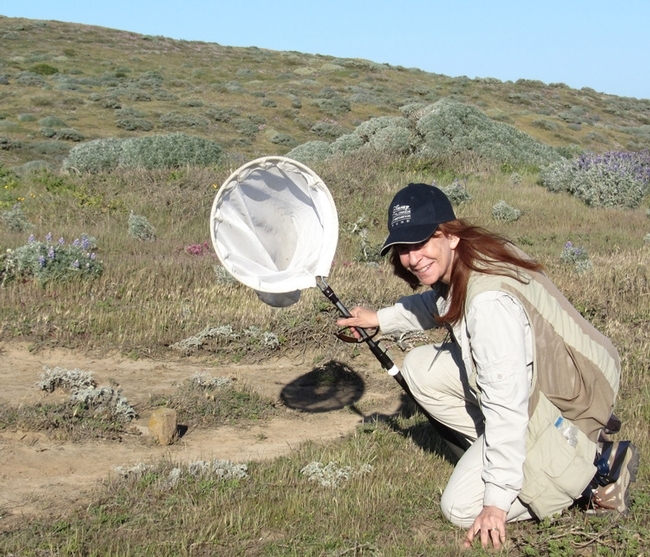
Leslie Saul-Gershenz, who received her doctorate in entomology from UC Davis in May 2017 and is the co-founder of SaveNature.Org, has a moth species named for her: Ethmia lesliesaulae.
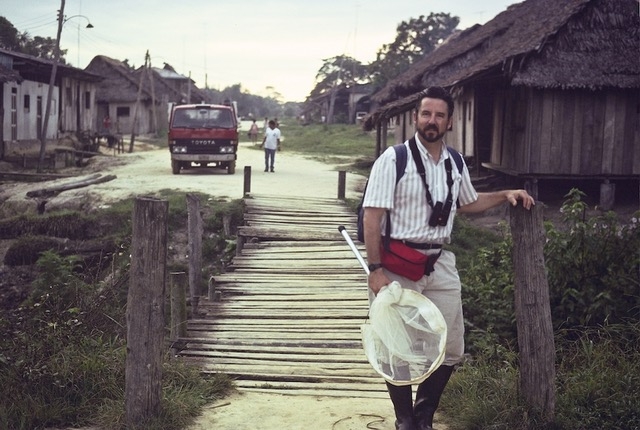
Norman Gershenz is the chief executive officer/co-founder of SaveNature.Org and director of the Insect Discovery Lab. He has a moth species named for him: Ethmia normgershenzi.